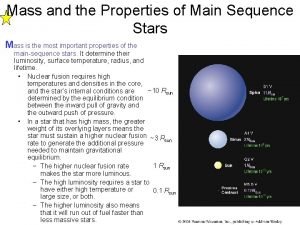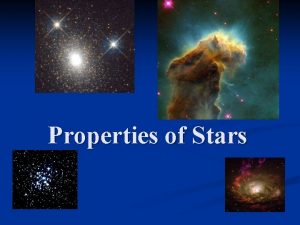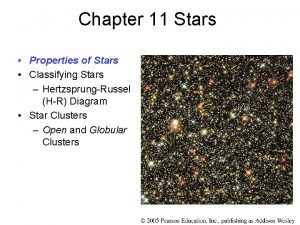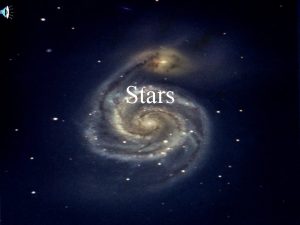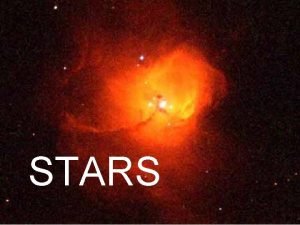The Properties of Stars Seven properties of Stars








- Slides: 8

The Properties of Stars Seven properties of Stars

The Seven Properties of a Star 1. 2. 3. 4. 5. 6. 7. Luminosity Temperature Distance Composition Radius Mass Radial Velocity

Luminosity & Brightness How “bright” a star is can be measured 3 ways. Apparent Magnitude is how bright a star appears to us on Earth Absolute Magnitude is how bright a star would be if it was at a standard distance. Both of these measure the amount of visible light coming from the star. Luminosity is the total amount of E-M radiation (Visible light, X-rays, etc. ) the star gives off

Temperature The temperature of a star’s surface is usually measured in Degrees Kelvin It can be calculated by measuring the intensity of its E-M radiation (including light) at different wavelengths.

Distance The distance is how far it is to the star Usually measured in Light Years or Parsecs Calculated by either the Parallax or Standard Candle Methods

Radius and Mass Radius measures the size of the star. It is found by comparing Luminosities Mass measures the amount of material in a star and its gravitational potential. The mass of a Star determines its “lifespan” and fate

Composition The Composition of Stars is, of course what they are made of. We find it by studying spectra Mostly they are Hydrogen and Helium… The exact amount of each establishes what “age” a star is.

Radial Velocity is how fast a star is moving toward or away from us. The Doppler Effect, Red and Blue Shifts of color are used to find this velocity By looking at the emission or absorption spectra.



